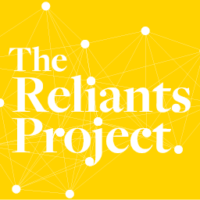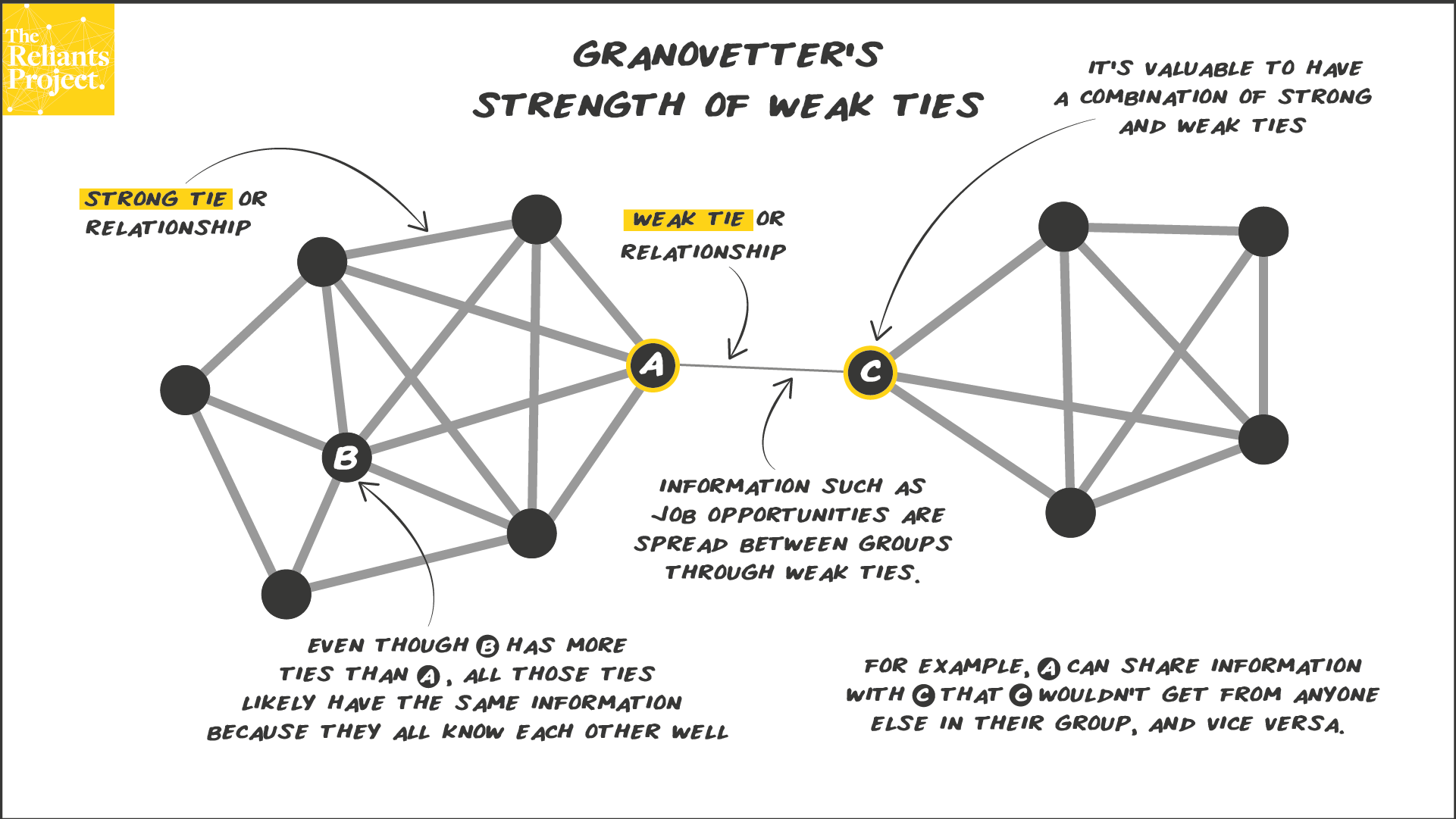This is the 4th post in a series. If you’re not familiar with how to read network graphs, you might prefer to start with Concept 1 or Concept 2.
Let’s say Bob (B) shares information about a new product with one or more members of his group. Alice (A) and Bob are directly connected to each other and have 4 mutual friends. Chances are, Alice is going to find out about this new product at some point because they are a tight-knit group. However, the only way that Charlie (C) will learn about this product is if his acquaintance Alice tells him. No one else in his tight-knit group is connected directly or indirectly to Bob, so there is no other way for this information to find it’s way to him. The strength of this weak tie between Alice and Charlie comes from the fact that they are part of different networks, and therefore have access to new and useful information.
Mark Granovetter’s paper, “The Strength of Weak Ties”, is actually one of the most cited papers in the social sciences. At the time, the prevailing belief was that strong relationships or ties between people were all that mattered. In contrast, a weak tie is how you might describe a relationship between two people who are acquaintances. Maybe they are affiliated with the same organisation but not close friends. Perhaps they share a cultural background but don’t know each other well and don’t have many people they know in common.
In his paper, Mark used the example of finding a new job to demonstrate that strong ties often had access to basically the same information. As a result, they weren’t able to help each other identify new job opportunities. People needed to reach beyond their strongest relationships to weaker relationships to find out new, useful information.
Ready for the next concept? The next one in the series is Concept 5: Burt’s Structural Holes and When You Can be a Broker.

